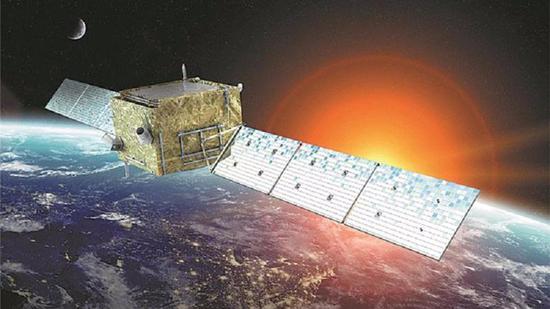
Illustration of the "nicknamed Monkey King". (Photo provided to China Daily)
A Chinese satellite, nicknamed Monkey King, is not only searching for the invisible dark matter, but also exploring the origin of the cosmic rays, high energy particles that travel through space at nearly the speed of light.
An international research team has conducted a precise measurement of the spectrum of protons, the most abundant component of cosmic rays, in an energy range from 40 GeV to 100 TeV (one TeV is one trillion electron volts, corresponding to one trillion times the energy of visible light) with China's Dark Matter Particle Explorer (DAMPE), also known as Wukong or Monkey King.
The measured spectrum shows that the proton flux increases at hundreds of billions electron volts and then drops at around 14 TeV, indicating the existence of a new spectral feature of cosmic rays, said Chang Jin, the principal investigator of DAMPE and the director of the Purple Mountain Observatory (PMO) of the Chinese Academy of Sciences.
"The new finding is of great importance in helping scientists understand the source and acceleration of cosmic rays in the Milky Way," said Yuan Qiang, a researcher at PMO.
The result, based on DAMPE's data collected in its first two and a half years, was published online in the latest issue of Science Advances.


















































